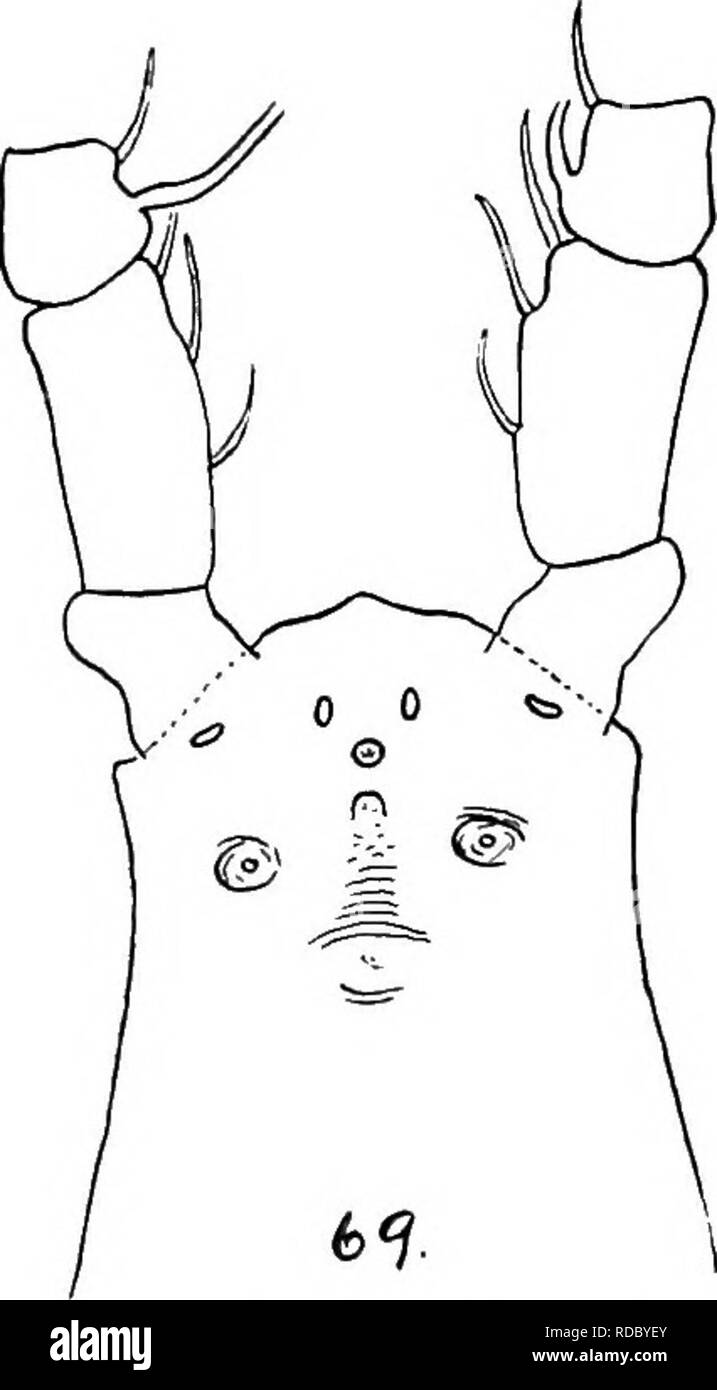. Report of the Canadian Arctic Expedition 1913-18. Scientific expeditions. 44 K Canadian Arctic Expedition, 1913-18 which may represent a rudimentary (i.e., vestigial) labrum. In front of this there is another median papilla of uncertain significance, and before this again a pair of clear oval areas. At the base of each anterior antenna there is a small transversely elongate chitinous thickening. Finally, on either side of the supposed labrum there is a wrinkled papilla showing a small central cavity; these are the possible vestiges of posterior antennae (Fig. 69).. Fig. 69. T. bernardensis.

Image details
Contributor:
The Book Worm / Alamy Stock PhotoImage ID:
RDBYEYFile size:
7.1 MB (134.7 KB Compressed download)Releases:
Model - no | Property - noDo I need a release?Dimensions:
1174 x 2128 px | 19.9 x 36 cm | 7.8 x 14.2 inches | 150dpiMore information:
This image is a public domain image, which means either that copyright has expired in the image or the copyright holder has waived their copyright. Alamy charges you a fee for access to the high resolution copy of the image.
This image could have imperfections as it’s either historical or reportage.
. Report of the Canadian Arctic Expedition 1913-18. Scientific expeditions. 44 K Canadian Arctic Expedition, 1913-18 which may represent a rudimentary (i.e., vestigial) labrum. In front of this there is another median papilla of uncertain significance, and before this again a pair of clear oval areas. At the base of each anterior antenna there is a small transversely elongate chitinous thickening. Finally, on either side of the supposed labrum there is a wrinkled papilla showing a small central cavity; these are the possible vestiges of posterior antennae (Fig. 69).. Fig. 69. T. bernardensis. Ventral side of head. The five antennary joints have the numerical proportions 8, 10, 5, 15, 16. The fifth joint carries a strong, terminal claw-like seta, which can be held for- wards or bent at a right angle to the joint. The following setae are to be found at different points on the antennae:— First joint: a subulate seta with short plumes. Second joint: five shortly plumose subulate setae, of which three are to be seen at the margin (Fig. 69), and in addition a long plumose seta arising dor- sally at the distal margin, whose long plumes occur on the slender distal portion of it. Third joint: two long plumose setae and a shorter subulate seta beset with fine points. Fourth joint: seven setai, including a slender aesthetask or sensory filament and one long plumose seta: proximad of the long plumose seta are two marginal subulate setae of which the proximal one is the longer; removed from the mar- gin a little in front of the proximal subulate seta and proximad of the base of the long seta is the aesthetask. In Th. longispinosus, Giesbrecht figures the aesthetask alongside of the long seta. Distal to the base of the long seta is a marginal subulate seta like the proximal one. Exactly opposite the base of the long seta is a short subulate seta, and in front of this a precisely similar one. In Giesbrecht's figure of Th. longispinosus, in place of the single marginal proximal s